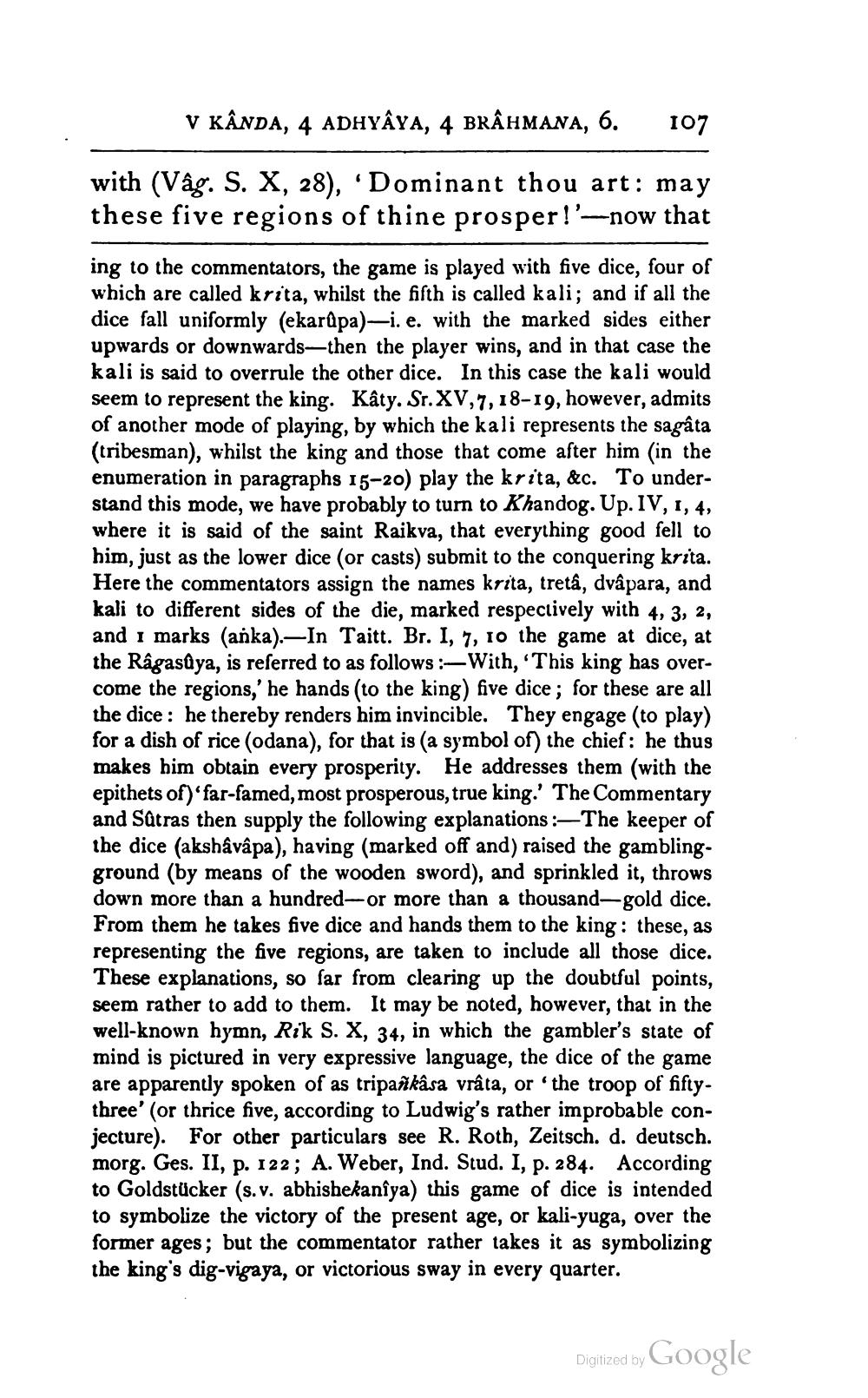________________
V KÂNDA, 4 ADHYAYA, 4 BRÂHMANA, 6.
107
with (Vâg. S. X, 28), 'Dominant thou art: may these five regions of thine prosper!'--now that
ing to the commentators, the game is played with five dice, four of which are called krita, whilst the fifth is called kali; and if all the dice fall uniformly (ekarūpa)—i. e. with the marked sides either upwards or downwards—then the player wins, and in that case the kali is said to overrule the other dice. In this case the kali would seem to represent the king. Kâty. Sr. XV,7, 18-19, however, admits of another mode of playing, by which the kali represents the sagâta (tribesman), whilst the king and those that come after him (in the enumeration in paragraphs 15-20) play the krita, &c. To understand this mode, we have probably to turn to Khandog. Up. IV, 1, 4, where it is said of the saint Raikva, that everything good fell to him, just as the lower dice (or casts) submit to the conquering krita. Here the commentators assign the names krita, tretâ, dvâpara, and kali to different sides of the die, marked respectively with 4, 3, 2, and i marks (anka).-In Taitt. Br. 1, 7, 10 the game at dice, at the Râgasûya, is referred to as follows :—With, 'This king has overcome the regions,' he hands (to the king) five dice; for these are all the dice: he thereby renders him invincible. They engage (to play) for a dish of rice (odana), for that is (a symbol of the chief: he thus makes him obtain every prosperity. He addresses them (with the epithets of far-famed, most prosperous, true king.' The Commentary and Sätras then supply the following explanations :—The keeper of the dice (akshâvâpa), having (marked off and) raised the gamblingground (by means of the wooden sword), and sprinkled it, throws down more than a hundred-or more than a thousand-gold dice. From them he takes five dice and hands them to the king: these, as representing the five regions, are taken to include all those dice. These explanations, so far from clearing up the doubtful points, seem rather to add to them. It may be noted, however, that in the well-known hymn, Rik S. X, 34, in which the gambler's state of mind is pictured in very expressive language, the dice of the game are apparently spoken of as tripankâsa vrâta, or the troop of fiftythree' (or thrice five, according to Ludwig's rather improbable conjecture). For other particulars see R. Roth, Zeitsch. d. deutsch. morg. Ges. II, p. 122; A. Weber, Ind. Stud. I, p. 284. According to Goldstücker (s.v. abhishekanîya) this game of dice is intended to symbolize the victory of the present age, or kali-yuga, over the former ages; but the commentator rather takes it as symbolizing the king's dig-vigaya, or victorious sway in every quarter.
Digitized by Google




